10 Crazy Animal Facts That Will Blow Your Mind!


Are you ready for some mind-boggling, bizarre, and downright crazy animal facts? If you thought you knew everything there was to know about the animal kingdom, think again! From headless cockroaches to maze-solving slime molds, these 10 crazy animal facts will blow your mind and leave you in awe of the natural world around us.
So sit back, buckle up, and get ready to have your mind blown by these amazing animal facts!
1. Did you know that a cockroach can live for several weeks without its head? This is because a cockroach’s brain is not located in its head but rather spread throughout its body.
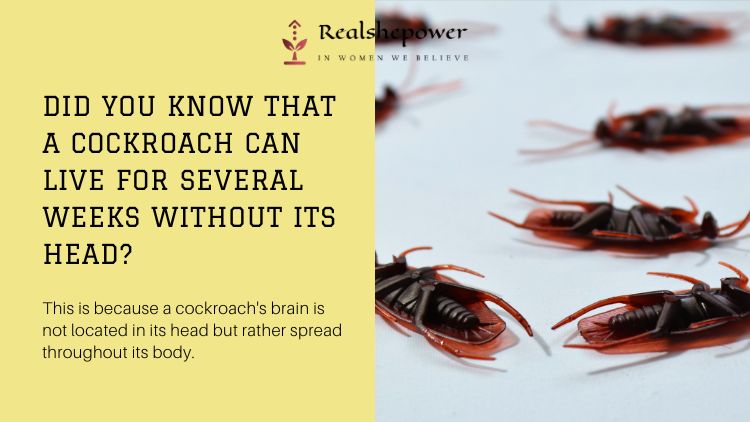
You see, a cockroach’s brain is not located in its head, as it is in most animals, including humans. Instead, a cockroach’s brain is spread throughout its body. It’s a decentralized nervous system, meaning that each segment of its body has a cluster of nerve cells that can function independently of the brain. This distributed nervous system allows a cockroach to continue functioning even if its head is severed from its body.
But wait, there’s more! Not only can a headless cockroach survive, but it can also perform some basic functions. For example, it can still breathe, move, and even react to stimuli like touch and heat. This is because the breathing and reflex actions are controlled by the ganglia, which are clusters of nerve cells located in the thorax of the cockroach.
2. Have you ever heard of a tardigrade? These tiny, eight-legged creatures are also known as water bears and can survive extreme temperatures, pressures, and even radiation. Some species of tardigrades can even survive in outer space!
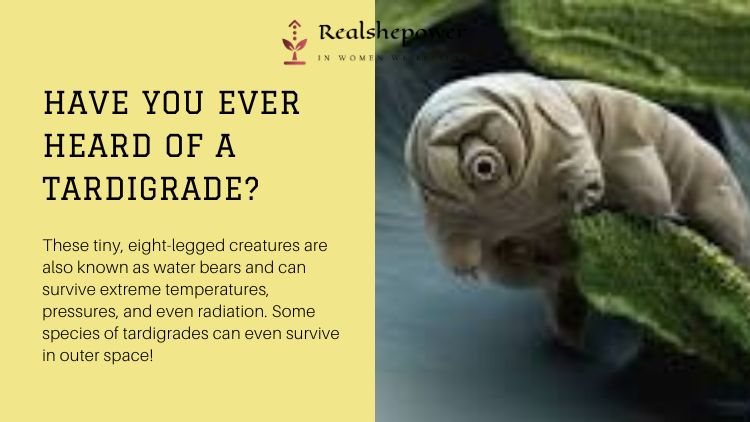
One of the most incredible things about tardigrades is their ability to survive extreme conditions. They can withstand temperatures as low as -273 degrees Celsius (just above absolute zero) and as high as 151 degrees Celsius. That’s right, tardigrades can survive boiling water and temperatures that would melt most metals!
Tardigrades can also survive extreme pressures – up to 1,200 times atmospheric pressure – and can even survive in the vacuum of space. Some species of tardigrades have been sent into space and exposed to the radiation and vacuum of outer space. And you know what? They survived!
How do they do it, you ask?
3. Did you know that a group of flamingos is called a flamboyance? These elegant birds are known for their bright pink feathers and are a common sight in many wetland areas.
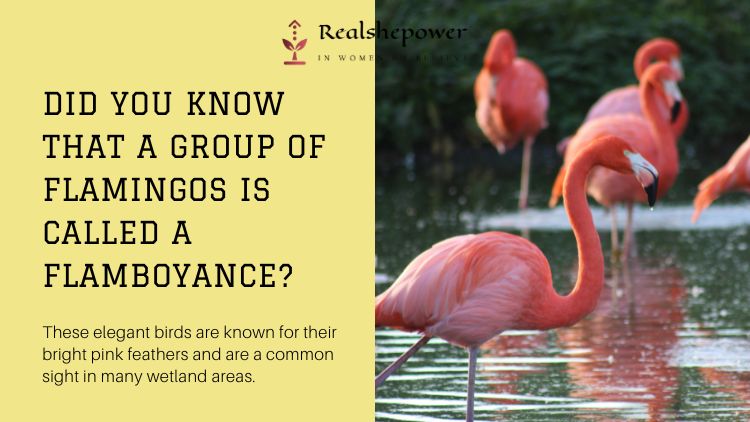
Flamingos are the ultimate showstoppers, with their vibrant hues and distinctive long, thin legs. But did you know that their color comes from the pigments found in the algae and crustaceans they feed on? It’s true! The more they consume, the more vivid their feathers become, making them one of the most colorful creatures in the animal kingdom.
But wait, there’s more! Have you ever seen a flamingo standing on one leg and wondered why they do it? It’s not just for show. These flamboyant birds are experts at conserving heat, and by standing on one leg, they can reduce heat loss through their extremities, keeping themselves warm in chilly waters.
4. Have you ever heard of the Venus Flytrap? This carnivorous plant can actually count the number of times an insect touches its trigger hairs before snapping shut, ensuring it captures its prey efficiently.
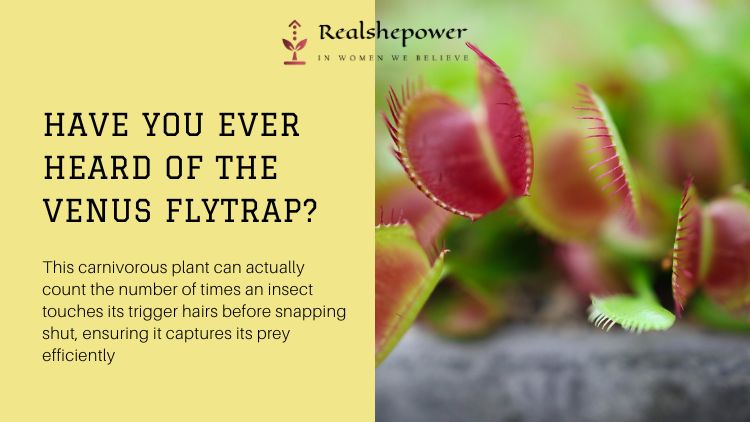
The Venus Flytrap, also known as Dionaea muscipula, is native to the southeastern United States and is one of the most well-known carnivorous plants in the world. It has evolved to survive in nutrient-poor environments, and it does so by eating insects. But how does it do it?
Well, the Venus Flytrap has tiny trigger hairs on the inner surface of its leaves. When an insect lands on the plant and touches one of these hairs, it triggers an electrical impulse in the plant. The plant then counts the number of times the insect touches the trigger hairs before snapping shut, ensnaring its prey.
5. Did you know that the longest recorded flight of a chicken is 13 seconds? Despite being able to fly short distances, chickens are not built for sustained flight due to their heavy bodies and small wings.
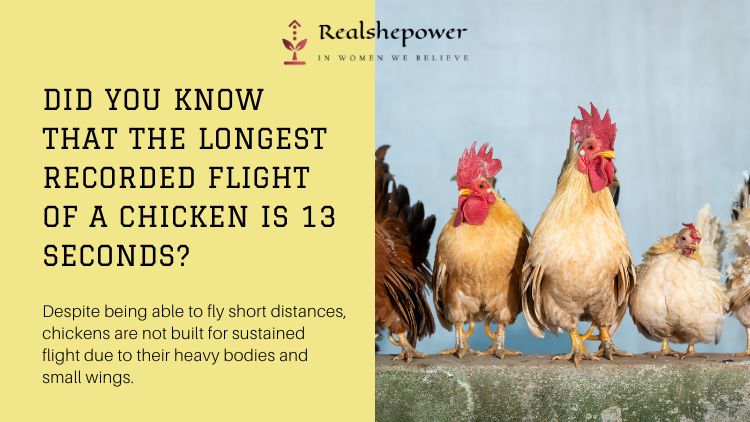
You might be wondering, why do chickens even have wings if they can’t fly for long? Well, the answer is that chickens are descended from wild birds that could fly, and although their wings have evolved to become smaller and less powerful over time, they still serve some important purposes.
For one thing, chickens use their wings to help them balance and maneuver as they walk, run, and jump. They also use their wings to communicate with each other through a variety of movements, such as flapping and spreading their wings.
6. Have you ever heard of the Blob? This strange organism is a type of slime mold that has no brain, no eyes, and no limbs. Despite this, it is capable of solving mazes and making complex decisions.
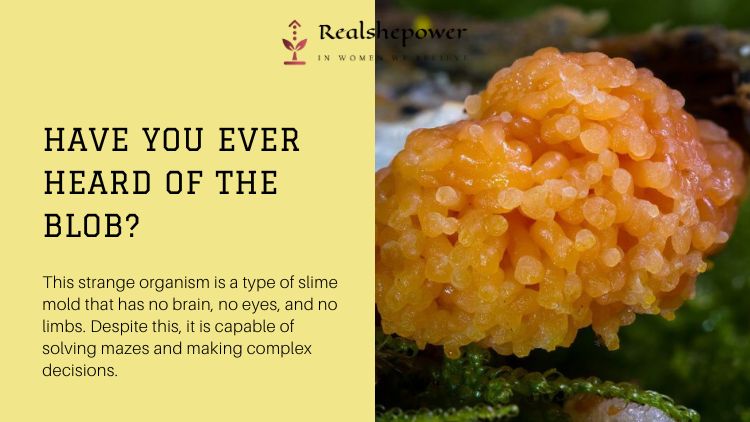
In one study, researchers placed the Blob in a maze with two different food sources. The Blob was able to find the shortest route to the food, even when the researchers changed the location of the food. This may not seem like a big deal, but remember, the Blob has no brain, no eyes, and no limbs. It’s essentially a giant amoeba that’s solving a maze.
But how does the Blob do it? Scientists believe that the Blob is able to make decisions by sending electrical signals through its body. It can also communicate with other Blobs, forming a sort of “collective intelligence.” This means that even though each Blob is just a single cell, when they work together, they can solve problems that would be impossible for a single cell to solve on its own.
7. Did you know that a group of ferrets is called a business? These playful and curious animals are known for their long, slender bodies and love of playing.
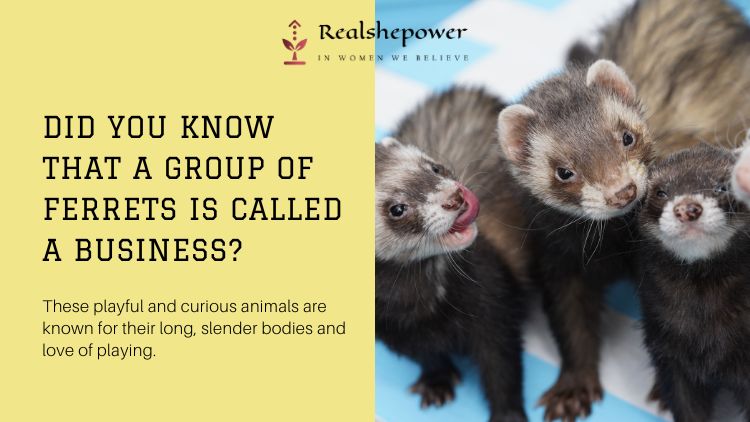
Ferrets are members of the weasel family, and their scientific name is Mustela putorius furo. They are domesticated animals that have been bred for thousands of years, initially for hunting purposes but now primarily kept as pets. Ferrets are incredibly social animals and thrive in the company of other ferrets, hence their “business” name.
One of the most notable features of ferrets is their long, flexible bodies. Their anatomy is perfectly suited for their love of crawling and burrowing, which makes them great escape artists. Ferrets are also known for their playful and curious nature. They love to explore and investigate their surroundings, which can sometimes get them into trouble.
8. Have you ever heard of the axolotl? This unique salamander is native to Mexico and has the remarkable ability to regenerate its limbs, spinal cord, and even parts of its brain. Scientists are studying this incredible creature to learn more about the mechanisms of regeneration and potential medical applications.
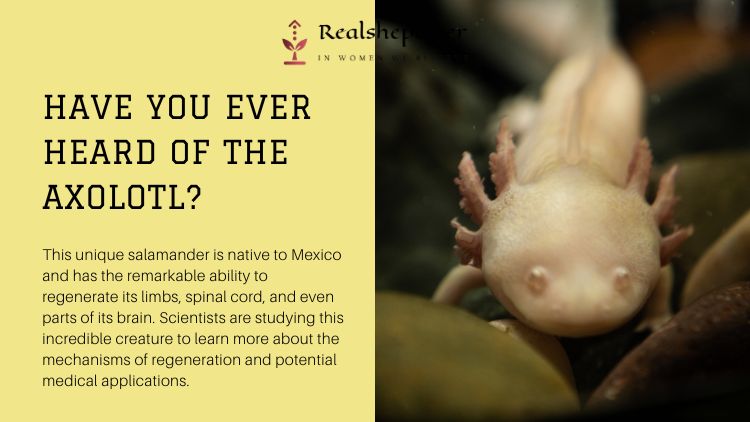
One of the reasons that the axolotl is so interesting to scientists is that it is capable of regenerating parts of its body that other animals simply cannot. For example, if a human loses a limb, that limb is gone for good – there is simply no way to regrow it. However, the axolotl is able to regenerate entire limbs from scratch, which has made it an incredibly valuable subject for researchers who are interested in unlocking the secrets of regeneration.
One of the most interesting things about the axolotl is the way that it regenerates its limbs. When an axolotl loses a limb, it begins by forming what is known as a “blastema,” which is a mass of cells that will eventually grow into a new limb. This process is incredibly complex, and involves the activation of a number of different genes and signaling pathways.
9. Did you know that a group of rhinoceroses is called a crash? These massive animals are known for their tough hides, powerful horns, and solitary nature. However, when they do come together, they can form an imposing and impressive sight.
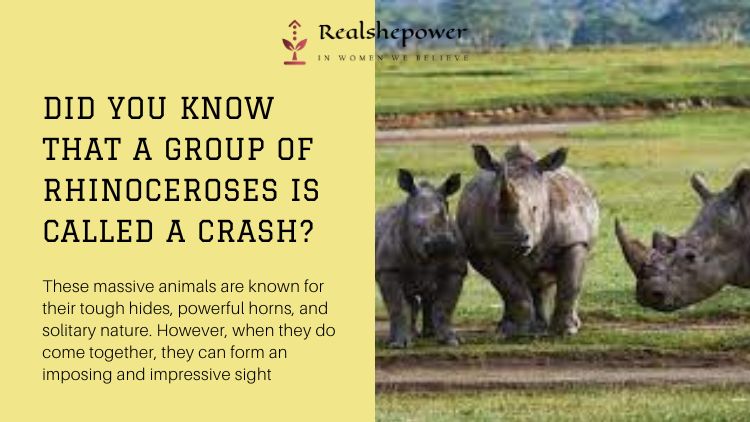
So, why do rhinos form crashes? Scientists believe that it may be a way for the animals to communicate with each other, particularly during times of stress or danger. Rhinos have poor eyesight but excellent hearing and sense of smell, so being in a group can help them detect predators and other threats.
Another theory is that rhinos form crashes to establish dominance. Like many other animals, rhinos have a hierarchical social structure, and being part of a crash may help a male assert his dominance over other males.
10. Did you know that the echidna is one of only two species of mammals that lay eggs (the other being the platypus)? These spiny creatures are native to Australia and New Guinea and are known for their long, sticky tongues, which they use to capture insects and other small prey.
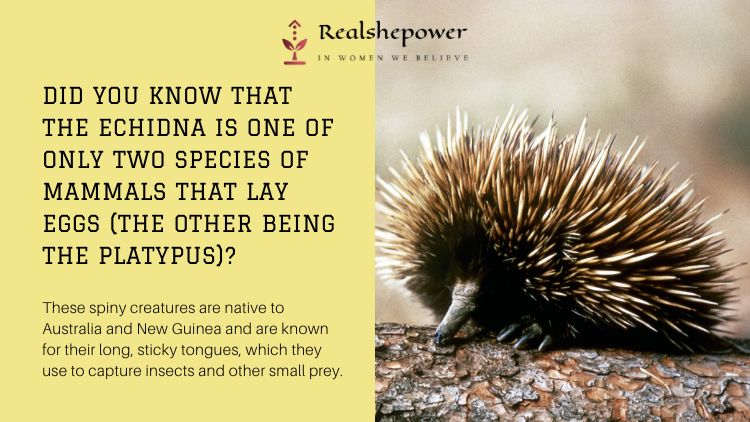
Echidnas are part of a group of mammals known as monotremes, which are characterized by laying eggs instead of giving birth to live young. While most mammals give birth to live young that are nourished by the mother’s milk, monotremes lay eggs that hatch outside of the mother’s body.
The female echidna lays a single, leathery egg that is about the size of a grape. After laying the egg, she incubates it by carrying it in a special pouch on her belly for about 10 days. Once the egg hatches, a tiny, blind, and hairless echidna, called a puggle, emerges.
But that’s not all – echidnas also have a unique reproductive system that allows them to switch between laying eggs and giving birth to live young, depending on environmental conditions.
So there you have it, ten weird and wonderful scientific facts to blow your mind. Who knew that cockroaches could live without their heads or that a group of ferrets is called a business? These strange and fascinating facts are just a small taste of the incredible diversity and complexity of the natural world around us. So go forth and continue to explore the weird and wonderful world of science!
